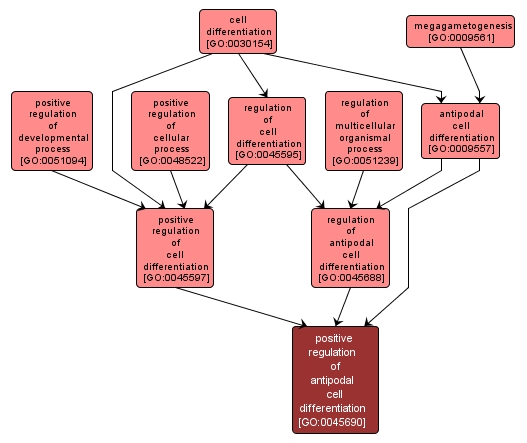GO TERM SUMMARY
|
| Name: |
positive regulation of antipodal cell differentiation |
| Acc: |
GO:0045690 |
| Aspect: |
Biological Process |
| Desc: |
Any process that activates or increases the frequency, rate or extent of antipodal cell differentiation. |
Synonyms:
- upregulation of antipodal cell differentiation
- up regulation of antipodal cell differentiation
- stimulation of antipodal cell differentiation
- activation of antipodal cell differentiation
- up-regulation of antipodal cell differentiation
|
|

|
INTERACTIVE GO GRAPH
|














